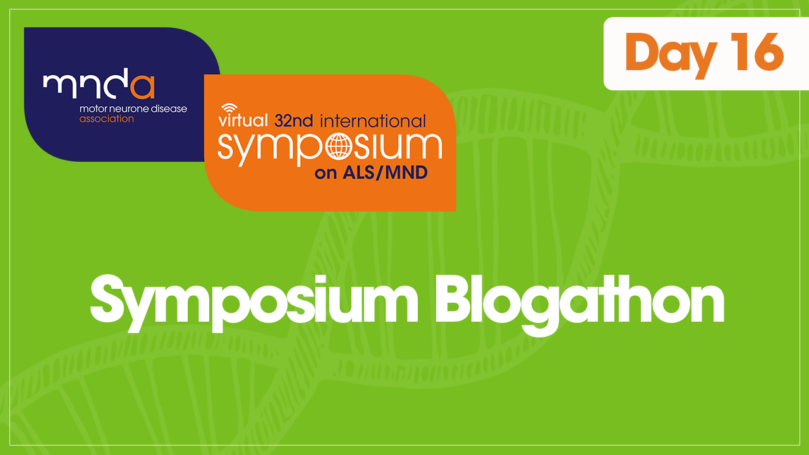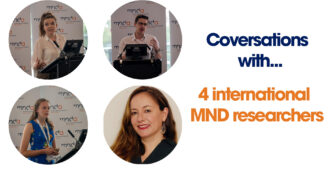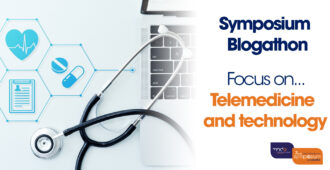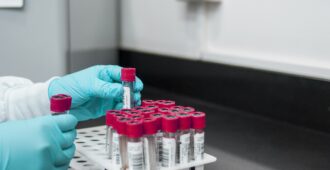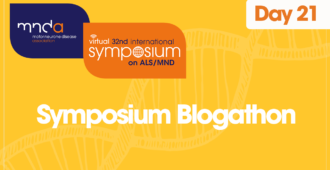This is blog number 16 in our ‘Symposium Blogathon’ – counting down to the 32nd International Symposium on ALS/MND. Numbers in bold green type correspond to the code in the abstract book. Click on the number to be redirected to the full abstract (the page may take a minute to load).
Telehealth, or telemedicine, involves the use of technology to allow healthcare professionals to monitor an individual’s health and deliver care remotely. For example, it could assist in the diagnosis and management of a condition. The ultimate goals of using this technology are to increase access to care for people, decrease the frequency of clinical visits and reduce clinical costs.
For people with reduced mobility, telehealth means no long commutes to short, but critical, assessments, and no waiting around. From previous studies, people taking part in remote assessments expressed higher satisfaction with the overall care they were given and appreciated remaining in the comfort of their own homes.
The ongoing risk of Covid-19 infection means that MND clinics have worked exceptionally hard to find ways to deliver effective virtual appointments and monitoring. Because of the positive feedback from clinic users, many are looking at ways to continue with this even after the Covid-19 crisis passes.
Home monitoring to improve the patient experience
The ALSFRS-R is a widely used assessment tool that is used to measure the progression of MND. The recent shift to remote monitoring has highlighted the requirement for valid and reliable patient-reported outcome measures. A team of researchers from Ireland and Sheffield have analysed the validity of the self-administered Telehealth in MND (TiM) ALSFRS-R compared to clinician administered ALSFRS-R. Twenty-eight patients completed 114 TiM ALSFRS-R assessments between January and June 2021 and these were compared to clinician-administered assessments. Correlation and consistency were high although there was disagreement in the dyspnoea question as, in the clinic, use of NIV incurs an automatic score of 0 but patients responded to the question based on symptoms. Based on these findings, the TiM ALSFRS-R has been further modified and future evaluation of scale validity will include a larger sample size (CMS-25).
Accessibility and uptake of the TiM system is further evaluated and discussed in poster CMS-28.
The Sheffield MND multidisciplinary team has implemented the TiM system into its clinical service. Patients are asked to complete fortnightly, health-related questionnaires which have provided longitudinal natural history data at frequent intervals, representing a broad range of patients. Analysis of the data could provide a more accurate picture of the natural history of MND, as well as enable an evaluation of the clinical needs of patients and the effectiveness of the service provided (EPI-15).
RELATED TOPIC
Blog | 9 June 2020 | Research Dev Team
Rapid development of the Telehealth in MND (TiM) Platform
Early identification and monitoring of the progression of bulbar and respiratory impairment is critical to providing quality care for people diagnosed with MND. For many people living with the disease, regular clinic visits are challenging so remote monitoring for healthcare practitioners to objectively monitor health status is needed. Cough impairment is commonly reported by people living with MND, and is linked to respiratory, speech and swallowing impairments, making it a promising feature for tracking function. Researchers in the USA set a long-term goal to determine the utility of remote cough monitoring for the identification and monitoring of bulbar and respiratory impairment in MND. Their preliminary findings are discussed in poster CMS-38.
Researchers in the USA have also assessed the impact of occupational therapy (OT) services delivered via telehealth to people with MND (CMS-35).
Stay informed
If you have come across this blog through the Symposium website, or a general search, please subscribe (see top right corner of page) and you’ll be notified every time we upload a new article.
You can follow our research account on Twitter. We tweet about up to the minute research and will be tweeting throughout the Symposium – #alsmndsymp #drivingmndresearch.
Take a look at the schedule of blogs for November as we continue counting down to the 32nd International Symposium on ALS/MND with our ‘Symposium Blogathon’.
To listen to these talks live, and take part in the Q&A sessions, register for the 32nd International Symposium now.

